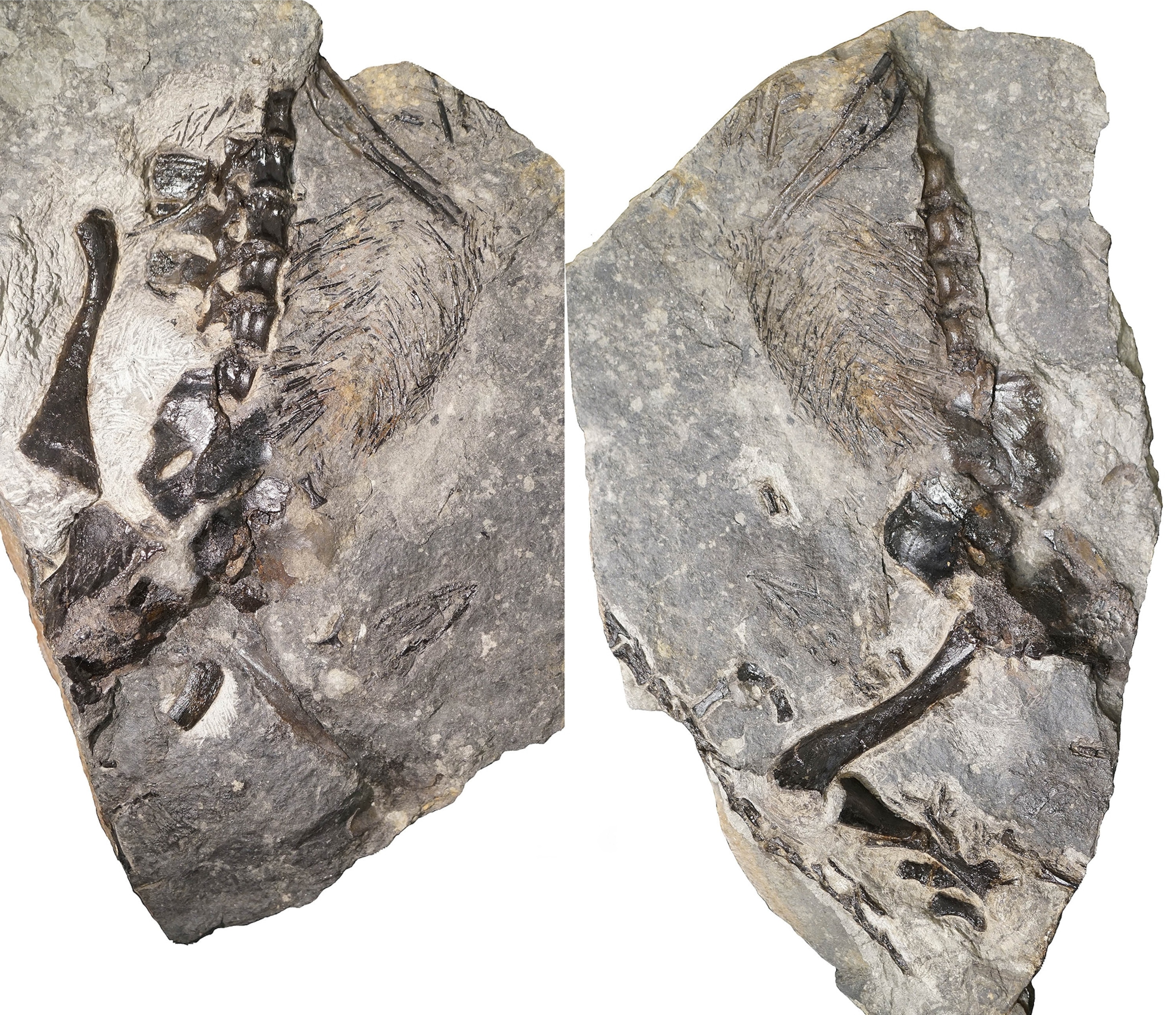Today, most of the remaining trees on Cape Breton Island, off the coast of Nova Scotia, are typical of a boreal forest. But during the Carboniferous period, which stretched from about 360 to 300 million years ago, the region was a subtropical swamp dominated by lycopids, giant relatives of today’s club mosses that could grow over a hundred feet tall.
The petrified, hollowed-out stumps and roots that remain today have been found to contain the fossilized bodies of many animals that populated the area at the time. Some of them are completely jumbled, while others are seemingly frozen in the position they were in when a flash flood covered them in sediment.
Now, the island’s fossil-rich cliffs have not only yielded a new Carboniferous creature, they have also revealed that complex parental care may have much more ancient roots than we thought.

Described today in the journal Nature Ecology & Evolution, the 309-million-year-old fossil includes the remains of an adult varanopid, a lizard-like animal from an extinct group that is traditionally considered to be an early part of the lineage leading to mammals. Behind its hindleg and encircled by its tail, the fossil also holds the diminutive skull of what looks like a juvenile of the same species.
“We believe it may show the oldest example of parental care ever documented for this group,” says study coauthor Hillary Maddin, a paleontologist at Carleton University in Ottawa, Canada.
Inferring such behavior from a fossil might sound like a bit of a stretch, but this is not the first time varanopids of very different sizes have been found preserved in close vicinity. An earlier fossil found in South Africa revealed an adult from this group with its forelimb surrounding multiple juveniles, in what looks like a protective posture. The Canadian fossil is similar but is around 40 million years older.
“We must of course be cautious when inferring complex behaviors without direct observation,” says evolutionary ecologist Geoffrey While, who studies parental care in lizards at the University of Tasmania. “But this fossil could certainly be interpreted as evidence of parent-offspring association, which is a key requirement for more complex forms of parental care."
Caring mother from the tree
The authors cannot say for sure whether the adult and juvenile are related, or even whether the adult is a female. Still, they’ve dubbed the new species Dendromaia unamakiensis, drawing from the Greek words for “tree” and “caring mother,” as well as the original Mi’kmaq name of Cape Breton Island.
“Demonstrating complex behavior in the fossil record is very challenging,” says paleontologist David Varricchio of Montana State University, who has found evidence of parental care in dinosaurs. But he agrees that the fossil contains “young and old together, well-preserved,” in what looks like a good place to hide, and that it provides “pretty good evidence” of potential parental care.
“This fossil suggests that parental care had an early origin among the likely ancestors of mammals,” he says. “And there is growing evidence for parental care in some dinosaurs as well, which carried over into birds. So, for both groups, the behavior goes back tens, if not hundreds of millions of years.” (See what colorful eggshells can tell us about dinosaur parenting styles.)
When parents and young start spending time together, that may be a crucial evolutionary step toward more complex forms of care, While says. Today, many modern birds, mammals, and lizards provide a range of support, from protecting eggs and juveniles to actively provisioning their young and showing them how to forage.
“Once these associations become a regular feature of a species’ biology, there is opportunity for further elaboration of care, including the evolution of parental protection of offspring and parental provisioning,” While says. Whether these forms of parental care had already evolved in the newfound species, though, is not clear from the fossil.
He adds that even though lizards are not widely considered to be doting parents, “the extent of parental care in this taxon has previously been underestimated. We now have evidence of parent-offspring associations for almost a hundred different species of lizard and snake.” Given the often cryptic nature of these associations, he believes this number will increase further.






